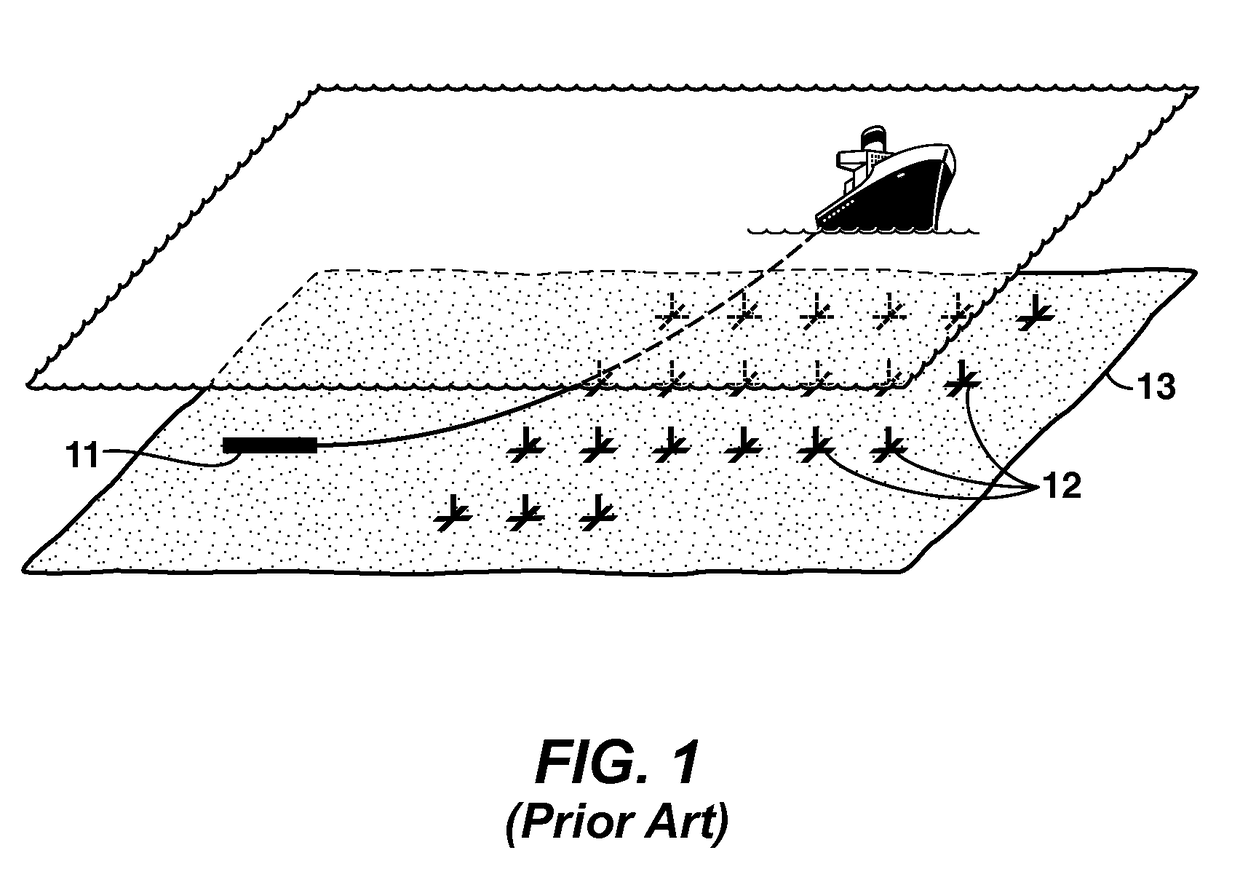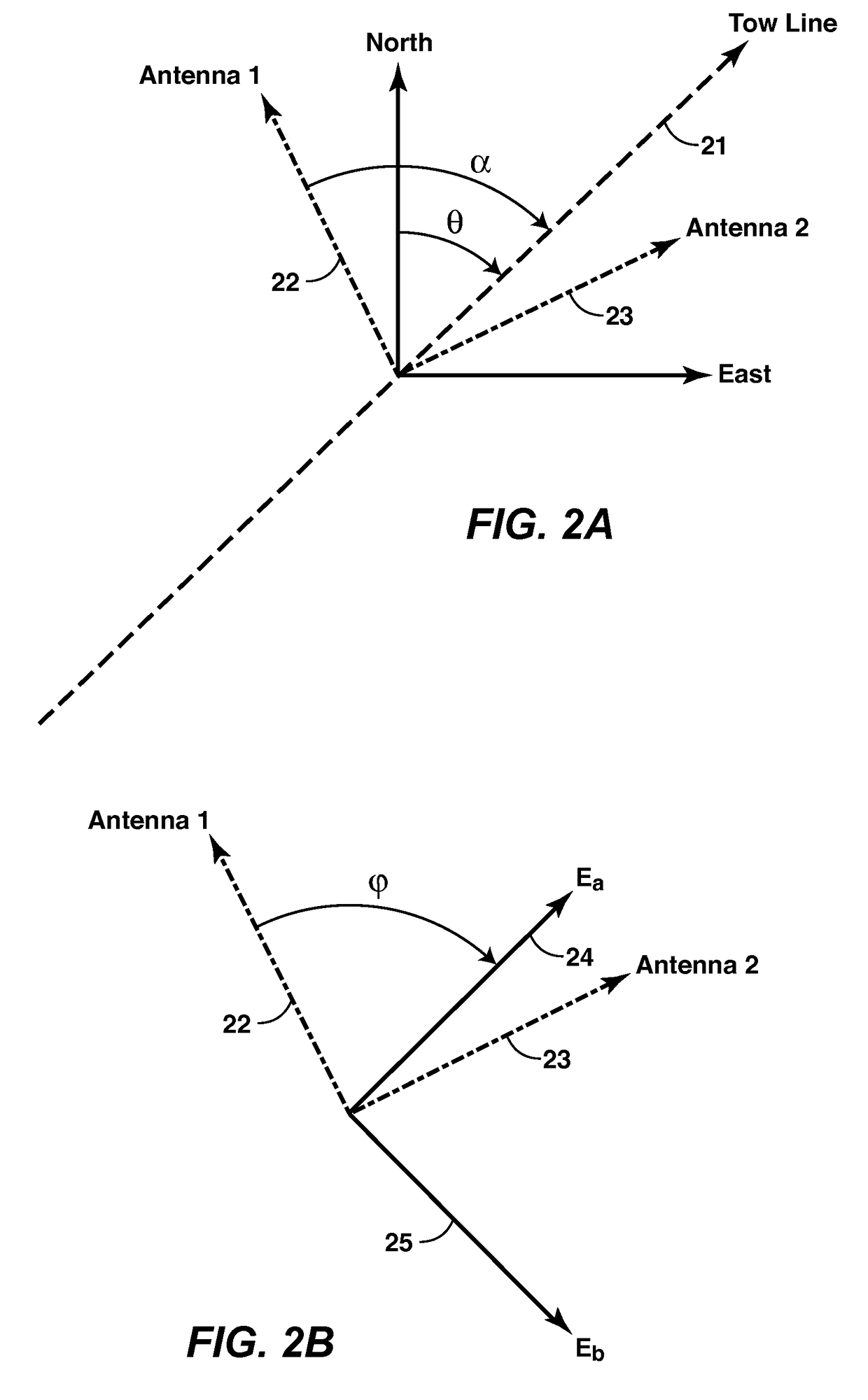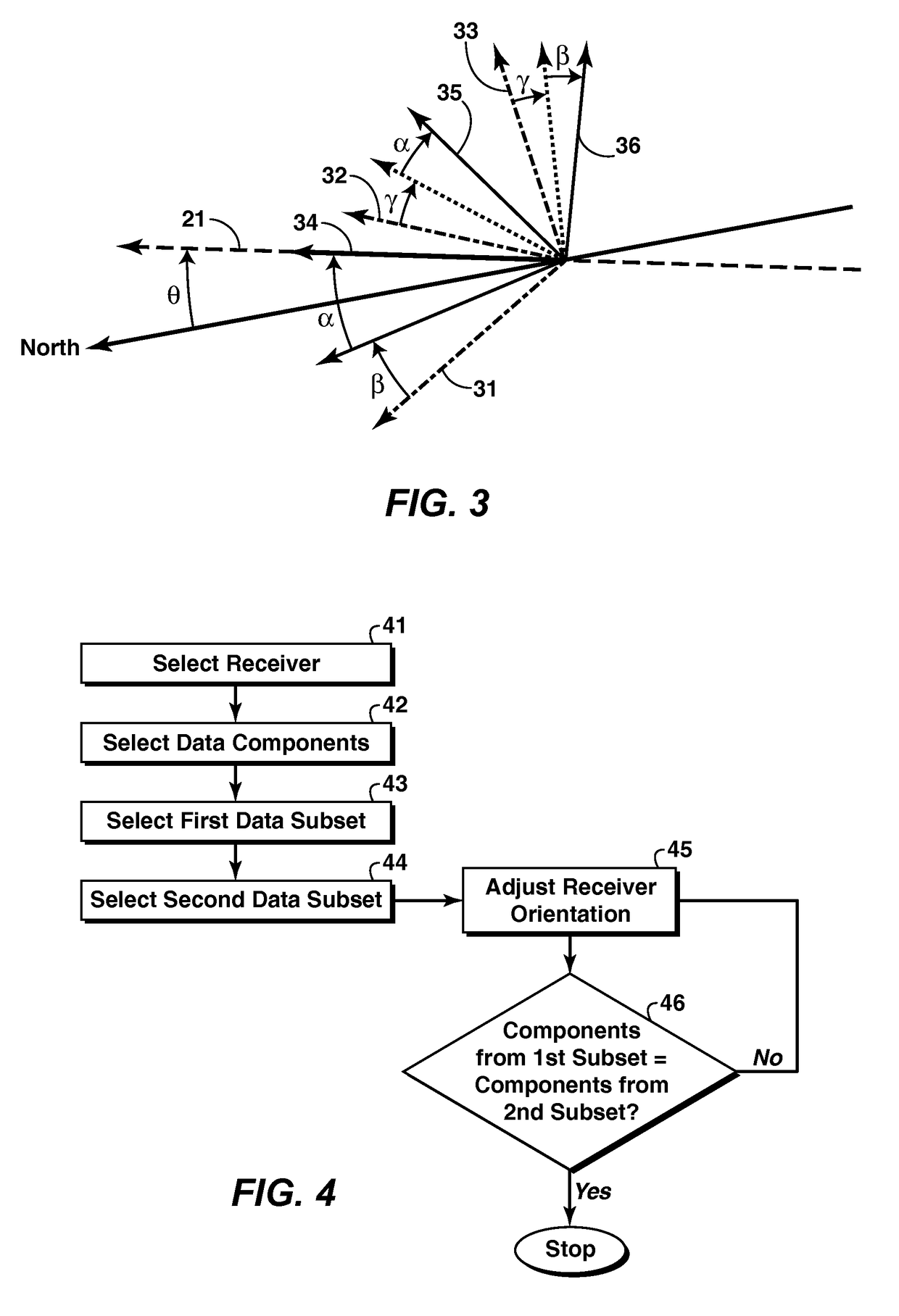Method for determining orientation of electromagnetic receivers
a technology of electromagnetic receivers and orientation methods, applied in the field of geophysical prospecting, can solve the problems of compass measurements being subject to stray magnetic fields, all methods have limitations, and the orientation of the electric and magnetic antennae of the receiver is not typically reliable, so as to reduce the degree of mismatch
- Summary
- Abstract
- Description
- Claims
- Application Information
AI Technical Summary
Benefits of technology
Problems solved by technology
Method used
Image
Examples
examples
[0078]The result of an example where the first embodiment of the present inventive method was used is shown in FIG. 6B. Crossline components of a broadside electric field are shown. The solid curves 61 are data at a frequency of 0.125 Hz from a tow line located 2.5 km from the receiver. The dashed curves 62 represent data at 0.125 Hz from a tow line 4.7 km from the receiver. The dotted curves 63 represent data at 1.25 Hz and tow line 2.5 km from the receiver. All curves in FIG. 6B reflect iteration to determine the best receiver orientation. FIG. 6A shows for comparison the same data resolved into the crossline direction using the orientation determined by polarization analysis. Thus, FIG. 6A represents a result from the present invention after an intelligent first guess at receiver orientation, whereas FIG. 6B shows the improvement after cycles of adjusting / updating of the orientation to better match the data. The improvement is demonstrated by positive offset ranges' being more sy...
PUM
 Login to View More
Login to View More Abstract
Description
Claims
Application Information
 Login to View More
Login to View More - R&D
- Intellectual Property
- Life Sciences
- Materials
- Tech Scout
- Unparalleled Data Quality
- Higher Quality Content
- 60% Fewer Hallucinations
Browse by: Latest US Patents, China's latest patents, Technical Efficacy Thesaurus, Application Domain, Technology Topic, Popular Technical Reports.
© 2025 PatSnap. All rights reserved.Legal|Privacy policy|Modern Slavery Act Transparency Statement|Sitemap|About US| Contact US: help@patsnap.com



